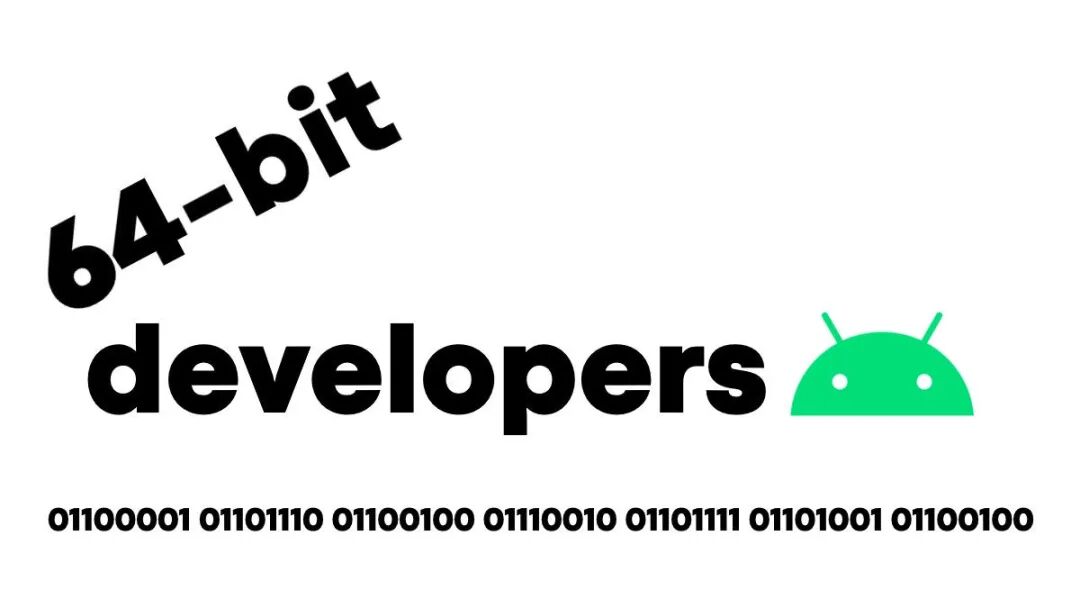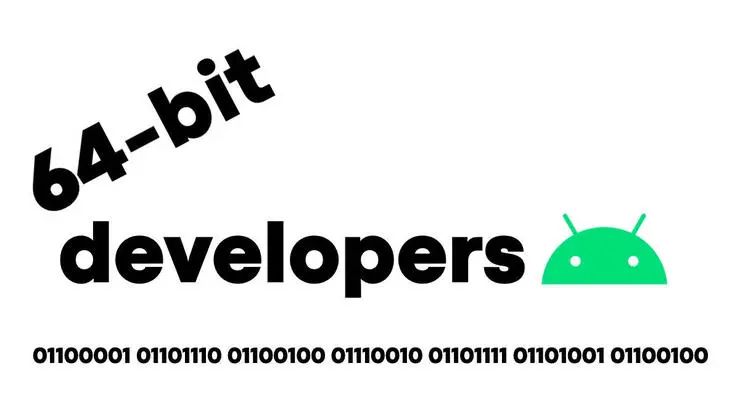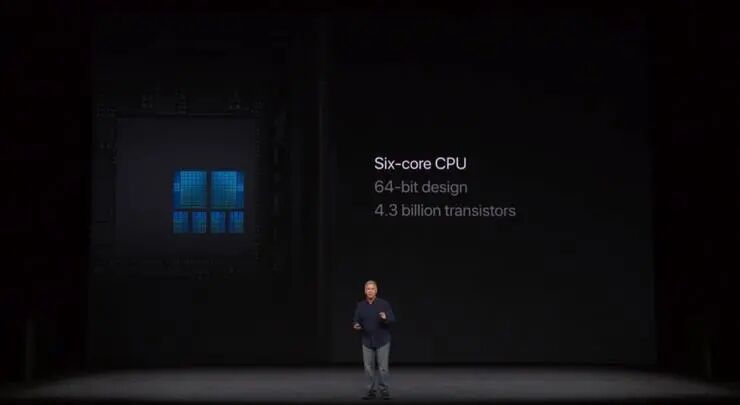
This is a watershed moment; there will be no 32-bit operating systems and no 32-bit applications.”
Author | Wu You
Arm announced that starting in 2023, all new smartphone CPU cores will be 64-bit only, with no 32-bit compatibility mode. In 2013, Apple introduced the 64-bit A7 processor in the iPhone 5s, marking the beginning of 64-bit smartphone processors. Soon after, 64-bit CPUs also appeared in Android phones, but all of these CPUs could run both 32-bit and 64-bit code.
Thus, we have transitioned from supporting only 32-bit, to supporting both 32-bit and 64-bit, and now we are about to abandon 32-bit altogether, entering an era of only 64-bit. What does this mean for Android and Apple?

1
The Transition from 32-bit to 64-bit
In smartphones, every pixel, every piece of data sent over the internet, every file stored in flash memory, every sound played, and every touch on the screen is represented and processed digitally. Most of the processing is done by the CPU, with assistance from other components like the GPU.
Processors store these numbers in binary form, allocating space for them in bits. A bit is represented by the binary digits 0 and 1; 8 bits can represent any number from 0 to 255, 16 bits range from 0 to 65,535, while 32 bits can store numbers up to 4,294,967,295 (i.e., 4GB).
Arm introduced 64-bit support in its 8th version of the instruction set architecture (known as Armv8), and continued to support 64-bit in Armv9. Both versions can optionally maintain backward compatibility with previous 32-bit Arm architectures. This means that in principle, Cortex-A processors can run both 32-bit and 64-bit code and switch between them instantaneously. Users will not notice any difference between 32-bit and 64-bit code. In fact, Samsung’s first Armv8 SoC was the Exynos 5433 used in the Galaxy Note 4, which had four Cortex-A57 cores and four Cortex-A53 cores, but operated only in 32-bit mode.
Over the years, things have become more nuanced. Arm has some Cortex-A cores based on Armv8, some of which are only 32-bit (like Cortex-A32), while others are only 64-bit (like Cortex-A34 and Cortex-A65). You may not have heard of these CPU designs because they have not been used in any smartphone processors.
Most Cortex-A processors from Cortex-A53 to Cortex-A75 support both 32-bit and 64-bit modes. The Cortex-A76 has a slight change; it supports 32-bit mode but only for applications. This means you need to run a 64-bit version of Android, but you can still run 32-bit applications if you have a Snapdragon 855 (or higher) processor, or a processor based on Kryo 4xx (or higher) (including Snapdragon 480, Snapdragon 675, Snapdragon 720, Snapdragon 730, Snapdragon 765, Snapdragon 780G, etc.), which has already abandoned support for 32-bit operating systems without you noticing.
With the decline of support for 32-bit applications in Cortex-X2 and Cortex-A510, you will have to run 64-bit operating systems and 64-bit applications. The Cortex-A710 maintains support for 32-bit applications, meaning any application that cannot move away from 32-bit mode will be forced to run on A710 cores.
2
By 2023, all Cortex-A CPUs will be 64-bit only
Arm made two statements regarding the transition to 64-bit. First, Arm mentioned that by 2022, all of its big cores would be 64-bit, and then a few months later, Arm stated that by 2023, all of its cores would be 64-bit. It sounds good, but the Cortex-A510 (a small core) is already 64-bit, so why are there two different deadlines? The author believes we will see new small cores supporting 32-bit in 2022, after which everything will be 64-bit.
It is worth noting that we are talking about Cortex-A processors, which are the CPUs in smartphones, tablets, Chromebooks, etc., and not the Cortex-M CPUs in Arm’s microcontroller series. In fact, Armv8-M (M for microcontroller) is only 32-bit.
3
Abandoning 32-bit Will Not Significantly Impact Android
The good news is that 64-bit Android is a mature technology, and completely abandoning 32-bit support will not make a significant difference.
The first fully 64-bit compatible version of Android was Android 5.0 (Lollipop). It was released in 2014 and added support for 64-bit Intel processors as well as 64-bit Arm chips. Since August 2019, all Google Play applications are required to support 64-bit. To help developers support 64-bit, popular game engines have added support: Unreal (2015), Cocos2d (2015), and Unity (2018). Starting August 1, 2021, Google Play will stop offering applications without 64-bit versions on devices that support 64-bit, meaning these applications will no longer be available in the Play Store on those devices.
Google has provided various tools and extensive documentation to help application developers prepare for the switch to 64-bit. For many applications, there is actually very little to do, as those written in Java or Kotlin do not require changes. However, applications developed using game engines or third-party SDKs need to ensure they are using the latest 64-bit versions.
Since devices running 64-bit Android have been on the market for many years, coupled with Google’s efforts to ensure that 64-bit applications are available in the Play Store, the eventual switch to 64-bit will not have a significant impact.
4
Apple Abandoned 32-bit Earlier
Since the iPhone 5S, Apple has supported 64-bit in both hardware and software. As early as February 2015, Apple announced that all iOS applications must support 64-bit. Then in 2017, Cupertino announced that 32-bit applications would not run on iOS 11. At that time, Apple completely abandoned 32-bit, and starting with the Apple A11 (found in iPhone 8 and iPhone X), all processors have been 64-bit.

macOS has a similar story. Since 10.7 Lion (2011), Apple’s desktop operating system has been 64-bit. Since 2018, all new applications submitted to the Mac App Store must support 64-bit, just like iOS, macOS has abandoned support for 32-bit applications (with the release of macOS 10.15 Catalina in 2019). Today, macOS 11 is 64-bit on Intel and also 64-bit on Arm, with the M1 processor being 64-bit only.
5
The Future is 64-bit
Starting in 2023, all Cortex-A processors will only support 64-bit. Since Android supports 64-bit and is transitioning to only supporting 64-bit applications smoothly, you may not notice any differences. If you are an Apple user, the switch to 64-bit on iOS and macOS has been in place for some time. I have not heard of any major issues during the transition.
For other CPU architectures and operating systems like Windows and Linux, 32-bit support will continue for a longer time. Since Linux is open-source, 32-bit support is likely to last for decades. For Windows on x86-64 processors, there may not even be a clear path forward.
Compiled by Lei Feng Network, original linkhttps://www.androidauthority.com/arm-32-vs-64-bit-explained-1232065/END Recommended ReadingMorning Report | The HarmonyOS concept continues to be hyped, with many companies urgently clarifying their positions; Didi submits IPO application, SoftBank will exit the board; Wang Chuanfu: Most Huawei phones are made by BYD
Process and Yield: Who is the Real Competitive Edge for Chip Manufacturers?

The ‘Tool’ Revolution of Low-Code
